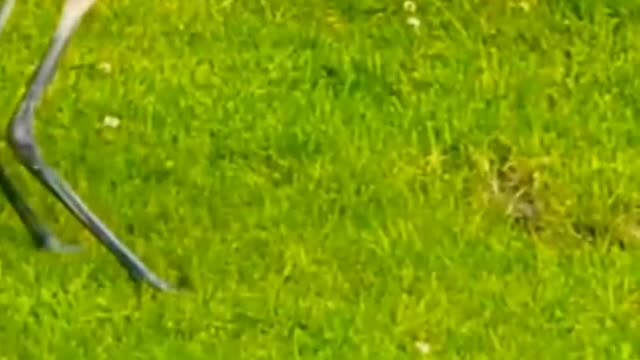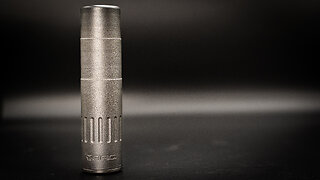Premium Only Content

Heron attacked rat😲.
Heron attacked rat😲.
The herons are medium- to large-sized birds with long legs and necks. They exhibit very little sexual dimorphism in size. The smallest species is usually considered the dwarf bittern, which measures 25–30 cm (10–12 in) in length, although all the species in the genus Ixobrychus are small and many broadly overlap in size. The largest species of heron is the goliath heron, which stands up to 152 cm (60 in) tall. The necks are able to kink in an S-shape, due to the modified shape of the cervical vertebrae, of which they have 20–21. The neck can retract and extend and is retracted during flight, unlike most other long-necked birds. The neck is longer in the day herons than the night herons and bitterns. The legs are long and strong and in almost every species are unfeathered from the lower part of the tibia (the exception is the zigzag heron). In flight, the legs and feet are held backwards. The feet of herons have long, thin toes, with three forward pointing ones and one pointing backwards.
The Pacific reef heron has two colour morphs, the light and the dark.
The bill is generally long and harpoon-like. It can vary from extremely fine, as in the agami heron, to thick as in the grey heron. The most atypical bill is owned by the boat-billed heron, which has a broad, thick bill. The bill and other bare parts of the body are usually yellow, black, or brown in colour, although this can vary during the breeding season. The wings are broad and long, exhibiting 10 or 11 primary feathers (the boat-billed heron has only nine), 15–20 secondaries, and 12 rectrices (10 in the bitterns). The feathers of the herons are soft and the plumage is usually blue, black, brown, grey, or white, and can often be strikingly complex. Amongst the day herons, little sexual dimorphism in plumage is seen (except in the pond-herons); differences between the sexes are the rule for the night herons and smaller bitterns. Many species also have different colour morphs. In the Pacific reef heron, both dark and light colour morphs exist, and the percentage of each morph varies geographically. White morphs only occur in areas with coral beaches.
-
 16:30
16:30
SNEAKO
9 hours agoNO FRIENDS IN THE INDUSTRY.
21.2K14 -
 6:19
6:19
BlackDiamondGunsandGear
20 hours agoHow Fat Guys can Appendix Carry
3.39K2 -
 6:58
6:58
Gun Owners Of America
23 hours ago2024 Was Huge For Gun Rights, Here's Our Top 10 Wins!
8.5K1 -
 15:50
15:50
Degenerate Jay
1 day ago $0.07 earnedJames Bond Is Being Ruined By Amazon? Make Him A Black Gay Woman?
6.52K7 -
 15:18
15:18
DeVory Darkins
23 hours ago $8.26 earnedTrump Drops NIGHTMARE Warning on Joe Biden
23.8K29 -
 36:13
36:13
The Why Files
1 month agoAlien Implants Vol. 1: Devil’s Den UFO Encounter: What Was Found Inside Terry Lovelace?
58.6K38 -
 9:03
9:03
Alabama Arsenal
1 day ago $0.15 earnedAAC HUB 2K | Modern Features, Iconic Classic Looks
3.51K1 -
 13:49
13:49
Dermatologist Dr. Dustin Portela
1 day ago $0.20 earnedDermatologist Reveals the Worst Things To Do To Your Skin
2.75K1 -
 1:02:24
1:02:24
PMG
21 hours ago $0.06 earned"Hannah Faulkner and Jamie Villamor | DEFEND, INSPIRE, INFLUENCE"
2.54K -
 44:27
44:27
BIG NEM
13 hours agoWOULD YOU RATHER? Live Stream
1.94K